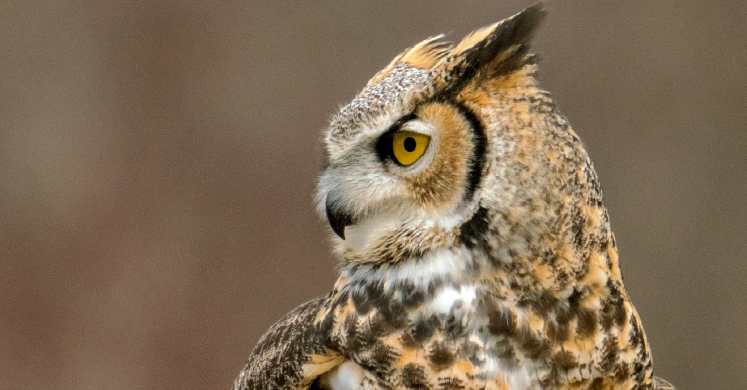Blog

#bioPGH: Great Horned Owls
 A resource of Biophilia: Pittsburgh, #bioPGH is a weekly blog and social media series that aims to encourage both children and adults to reconnect with nature and enjoy what each of our distinctive seasons has to offer.
A resource of Biophilia: Pittsburgh, #bioPGH is a weekly blog and social media series that aims to encourage both children and adults to reconnect with nature and enjoy what each of our distinctive seasons has to offer.
Who who whowho who…who
There it was! An owl call, and not just any call – a Great Horned Owl, the birds with the classic “who” call. We suspected the forested area at the edge of our neighborhood would be habitat for some sort of owl, and now we had finally heard this magnificent raptor!
Great horned owls may be at home here in Western Pennsylvania, but they can be found across North America in a variety of habitat types, partly because they are adaptable as predators. They “specialize” broadly on small mammals, but can also prey on other birds and occasionally reptiles or amphibians. On an entertaining note, they also lack a sense of smell, and they are quite efficient at preying on skunks.
Great horned owls, as well as owls in general, have a variety of adaptations that make them excellent predators. First of all, owls are nearly silent fliers. Most of us have heard the wing flaps of ducks or song birds as they take-off, but you won’t hear that from owls. This is possible for a few reasons: first, owl flight feathers have “serrated,” rather than straight, edges, which helps muffle the sound of feathers moving through air. Another adaptation for silent flight is their large wing size compared to their bodies. This allows owls to fly more slowly than other birds, which helps with silent flight.
Another owl superpower comes from the collective adaptations of their eyesight. Noticeably, owls have surprisingly large eye size relative to their skulls. To make a comparison: if our eyes were as large in our skulls as owl eyes are in their own skulls, we would have eyes the size of oranges! Large eyes allow owls to pick up any light in their dark, nocturnal environments. This advantage comes with a tradeoff, though. Owls actually don’t have round eyeballs the way we do. Rather, their eyes are more comparable to tubes with rounded lens, cornea, and iris in front. Also, owls lack the muscles to move those eyes within their orbitals (eye sockets). So while we can look to one side or the other without moving our heads, owls can’t do that. However, bird heads in general have a greater degree of rotation than us because they have more neck bones (also called cervical vertebrae) than we do. In fact most species of owls have twice the number of vertebrae in their necks that we do (14 versus our 7. Even giraffes only have those same 7 cervical vertebrae!) Owls cannot turn their heads all the way around though—that’s just a myth.
To watch this powerful predator in action, check out the video below!
Connecting to the Outdoors Tip: Great horned owls live all around the Pittsburgh area, but remember, your best bet is to hear one at night. Check out recent sightings on eBird, and be sure to listen quietly. Or, if you're family in search of learning adventures, check out the activity resources from the National Audubon Society!
Resources
Cornell Lab of Ornithology: Great Horned Owls
Audubon Soceity: Great Horned Owls
Image Credits: Peter K. Burian, CC-BY-4.0 (header) and CC-BY-SA-4.0 (cover)
